Search
To search for an exact match, type the word or phrase you want in quotation marks.
A*DESK has been offering since 2002 contents about criticism and contemporary art. A*DESK has become consolidated thanks to all those who have believed in the project, all those who have followed us, debating, participating and collaborating. Many people have collaborated with A*DESK, and continue to do so. Their efforts, knowledge and belief in the project are what make it grow internationally. At A*DESK we have also generated work for over one hundred professionals in culture, from small collaborations with reviews and classes, to more prolonged and intense collaborations.
At A*DESK we believe in the need for free and universal access to culture and knowledge. We want to carry on being independent, remaining open to more ideas and opinions. If you believe in A*DESK, we need your backing to be able to continue. You can now participate in the project by supporting it. You can choose how much you want to contribute to the project.
You can decide how much you want to bring to the project.
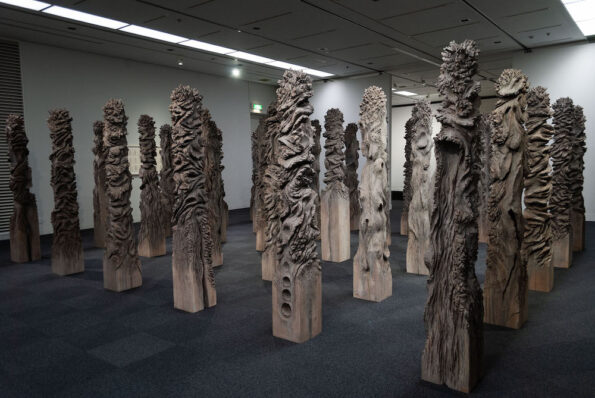
If a whitish light settled on your forest, rivers of a silver milky light would be created in its filtrations, of a singular brightness as if it were on a watercourse. Dreams are made of this particular brilliance.
From his youth in Ogawa the most visible marks have been those that have remained in relation to light and nature. A theater where subtlety, temperance and strategy itself are staged: the ancestry of thought.
Influenced by the work of Medardo Rosso, he saw in his beginnings a field of possibilities, of experimentation in the aura evoked in those works where a funereal ambiguity overlapped with the naturalness of his characters, like an infinite veil of rawness and sincerity. In the Italian artist he found perhaps the tip of the iceberg that would define his most mature style.
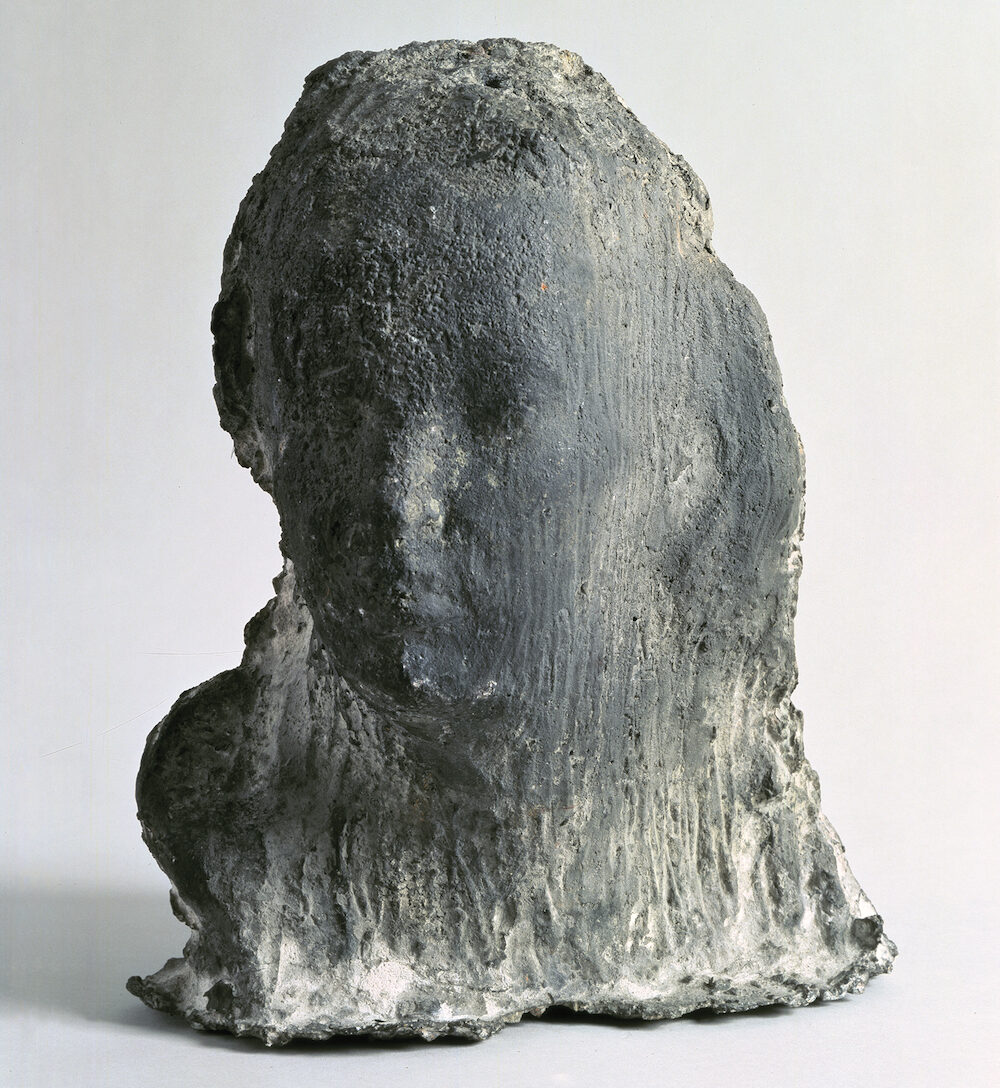
Ecce puer (Behold the Child), 1906. Cortesía de Sculpturemagazine.Art
Parallel to Rosso, this veil which was presented in painting, had no relationship with the wet cloth technique, but rather was a boundary between the raw material and the sculptural fact, where the works mutate between the natural landscape and the portrait.
In this way, his early work will be mainly characterized by a gloomy naturalism that he will use as a field of action, denouncing the Vietnam War. Thus, at the beginning of the 70s, he made a series of portraits, among which Container III (1973) stands out, where the artist represents himself and his impotence in the form of a young man standing on a symbolic representation of the japanese flag, in a pose that evokes the proverb ‘see no evil, hear no evil, speak no evil’.

Lying Man, 1971
It will be in turn in these years his encounter with the Mono-Ha movement that will frame his style in ways of contemporary art and abstraction mainly, with works such as Hypothetical Sculpture II, where he will pose manufactured wooden structures on trees, paradoxically confronting the symbolic dimensions of the same material in the encounter between nature and culture.
Even though his main medium is sculpture, the planning of the sketch is very important to Shigeo, the work of the line and the form in these, give account of two essential elements from this moment on: in the first instance it is the influence that Western art has had, mainly the school inaugurated by Rodin in his work and training: a centripetal figuration; eccentric; free; even a little baroque.
Works like Trunk III (1982) as well as Lying Man (1971) carry a structuring of the body that responds to the classical western canons (mainly Renaissance). Figuration from which he will move further and further from that moment on.
In the sketches of more current works, on the contrary, a very marked journey throughout his career in the definition of his style will be clearly seen, as well as the mass of lines with which he devised the reverse sides of Cave III (2010): the guidelines of the bodies; the hint of pose and form; the emotional evocation, will remind a treatment of the shapes and contours that we can find in sketches both in Rodin and in Da Vinci.
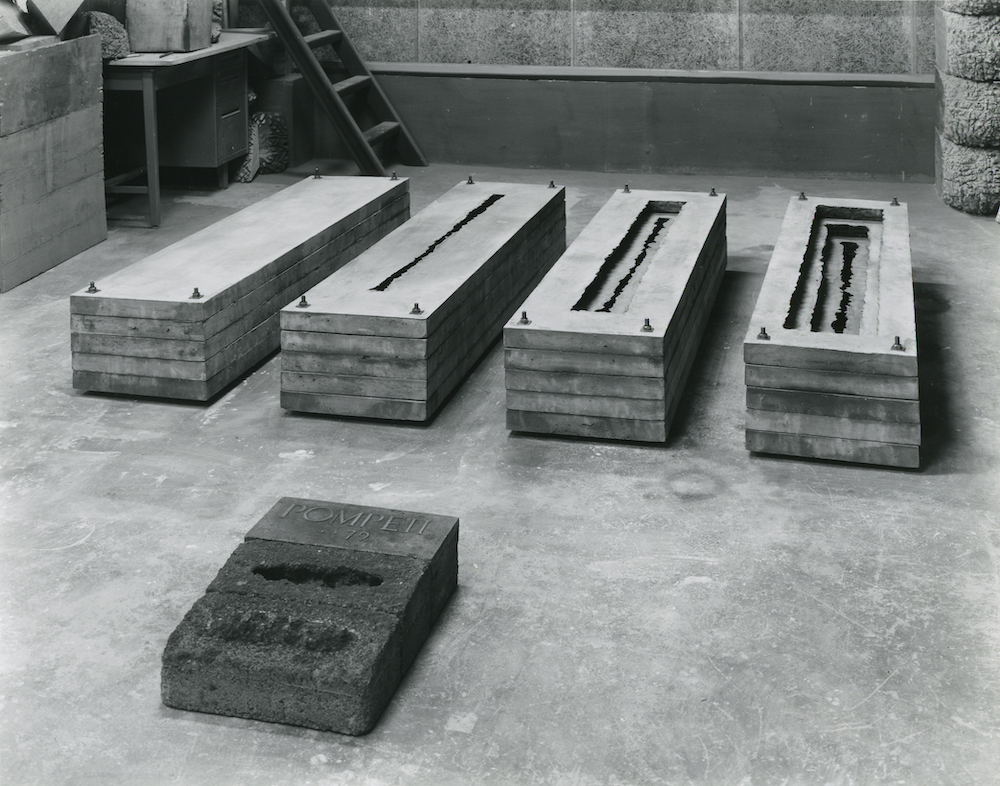
Pompei II, 1974
In this way, works such as Pompei II (1974) will inaugurate a new stage of total non-figurative where the forms will oscillate between the denial of figure and bio-cosmology, unified in the history of art. With a compelling and attractive abstraction, his sculptures refer us to the grammars of dreams, mainly to the reconstruction of oneiric, measured and regular forests: neo-romantic and fictional.
Having chosen wood as the primary material – together with plaster and iron – his work will be characterized by tearing, marking and carving on its surface with an electric saw, where the final sculpture will then be rubbed with the ashes of the remains of wood. of said carvings, covering these organic bodies and giving them a characteristic silvery hue.
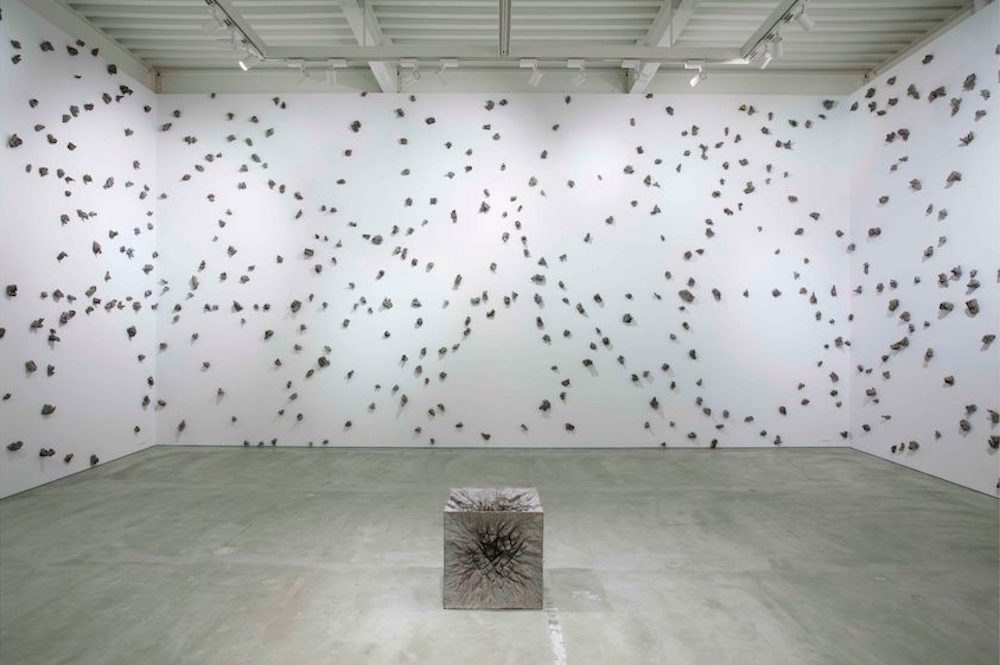
Body Of The Gaze -Scatter, 1991. Foto: Tadasu Yamamoto. Cortesía Ichihara Lakeside Museum
His sculptures will return repeatedly to the ideal of the cluster, a concept that he will relate to the social structure and will have a profound relationship with his interest in the anthropological field. Putting it in relation to nature, it will be reflected in the construction of sculptures as an amalgamation of minimal units where the subject becomes a pole, a tree, a rope, a milestone, a tomb.
His pieces will work from atomization to amalgamation, his sculptural universes metastasize in this very thing: the organic and inorganic particle simultaneously joins and separates, reforms, reorganizes, creates new forms and replicates them. Their bodies will form uniform as well as distinguishable masses, the lines will dissolve in the shadows and exalt in the light. Thus the dream will be once more ambiguous and nature will mutate into tekne.
Deus ex machina these measures, and regularity transform the forest into a cemetery: silver monoliths, carved, and arranged as schematically as possible will perhaps evoke new spirits.
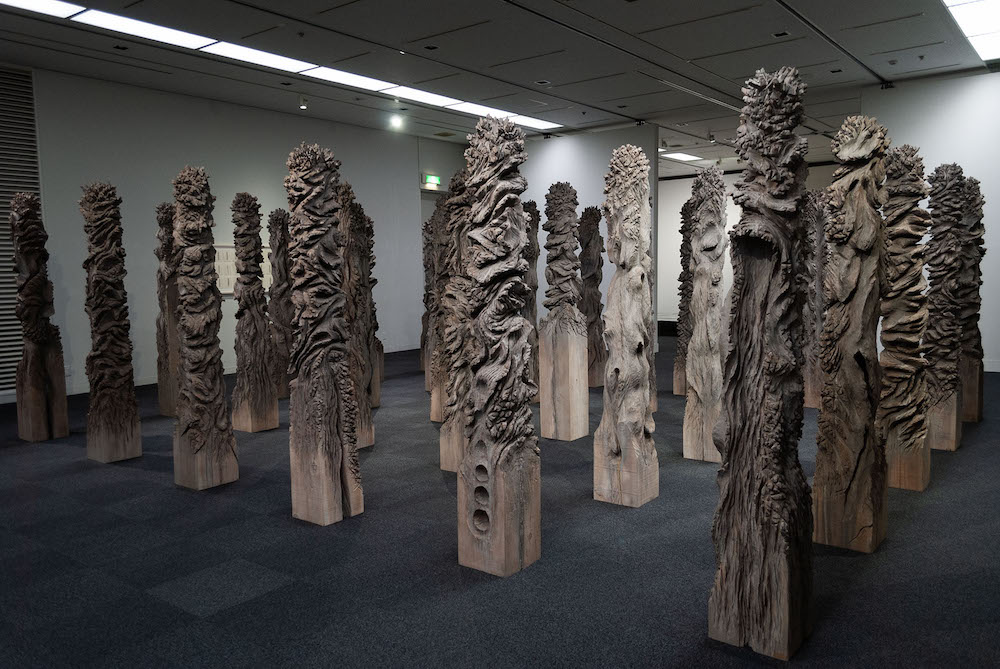
Woods IV, 1991
It introduces us to a dream forest where space is multiple. If we allow ourselves to enter his universe, we will discover that it works like a tesseract, where the top is the bottom, the left the right, the front can be the back and the kata the ana.[1]kata” (Greek for “down”) and “ana” (Greek for “up”) to describe the two opposite directions in the fourth dimension, equivalent to right-left, up-down, and front-back.
Its underwater roots take us to the landscape of the bottom of a river that turns towards the surface, where we wander without horizons or directions, and where geography makes us dreamy but confusing and we enter the thicket.
Thus, the gloom settles on the forest, as Toya Shigeo used to observe in his youth it did on the mountains of Ogawa. And perhaps in this forest his words will resonate in our ears
“I learned a lot by thinking about sculpture from the perspective of how strange it is that sculpture, which has no practical value whatsoever, did not exist at the outset but emerged along with human emotions.”[2]Toya Shigeo on Yoshimoto Takaaki in “The Incomprehensibility of Sculpture” – original title: Chōkoku no wakaranasa – from the exhibition catalogue, interview with Sahara … Continue reading
But this forest and necropolis is autonomous and the thicket whispers over its mouth, within us, in the heart of what slips between our ears, and in said gloom the forest desires us.
The exhibition “Shigeo Toya: Sculptures” runs at the Saitama Museum of Modern Art (Japan) until May 14, 2023.
| ↑1 | kata” (Greek for “down”) and “ana” (Greek for “up”) to describe the two opposite directions in the fourth dimension, equivalent to right-left, up-down, and front-back. |
|---|---|
| ↑2 | Toya Shigeo on Yoshimoto Takaaki in “The Incomprehensibility of Sculpture” – original title: Chōkoku no wakaranasa – from the exhibition catalogue, interview with Sahara Shiori, Suzuki Yohino and Hirano Itaru. |

Gonzalo Pech [Argentina] is an unstructured text characterized by a narrative that is at times excessively analytical. His work, which transmutes between the philosophy of art and advertising since his adolescence, is full of irreverence and contradiction. Curator and photographer by training, he has preferred to frame his practice in what he calls Blessure D’art, amalgamating its nihilistic yet platonic nature
"A desk is a dangerous place from which to watch the world" (John Le Carré)